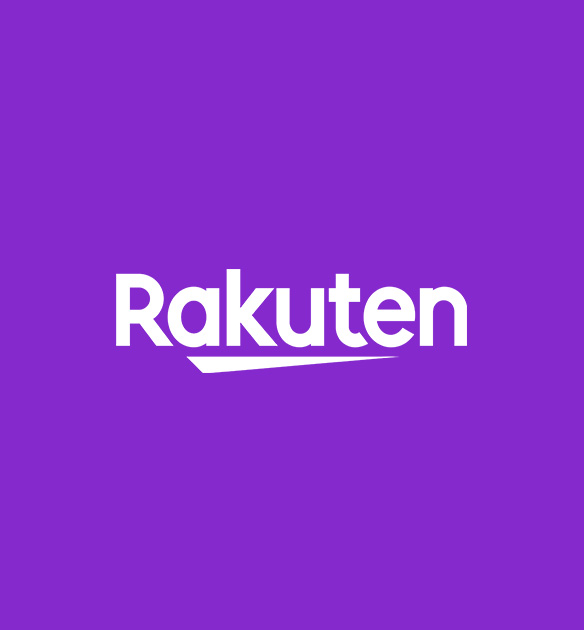What’s ahead for affiliate in 2023
To drive maximum growth, every affiliate marketer must look ahead to understand how their category and customers will evolve. So, what’s ahead for affiliate? We asked our experts to point out the most important trends they expect in the next 12-18 months.

To drive maximum growth, every affiliate marketer must look ahead to understand how their category and customers will evolve. So, what’s ahead for affiliate? We asked our experts to point out the most important trends they expect in the next 12-18 months. Here are six ways the market is changing, plus tips and recommendations for turning these changes into growth opportunities.
1) The Great Trade Down Has Reshaped Digital Commerce
In a recession, many consumers look for less expensive ways to purchase things they need. Last fall, our team published an analysis of how consumers were changing their buying patterns in light of inflation and changes in the economy. To conduct the research, we divided our retail apparel clients into four segments (luxury, elevated brands, everyday fashion retailers, and budget brands) and analyzed current sales trends for each grouping. Here’s what we found:
- Designer brands are doing well. Consumers who can afford expensive designer merchandise continue to spend. Shoppers at tier 1 retailers are trading down 38% less often than in 2021 and 53% less often than in 2020.
- Elevated brands have lost the most customers. Consumers are replacing higher-priced popular brands with affordable options more often. Shoppers at tier 2 retailers are trading down 15% more often than in 2021 and 28% more often than in 2020.
- Everyday fashion retailers are mostly holding their own. Consumers of affordable, everyday fashion are hanging in there. Tier 3 retailers may be able to hold onto shoppers with perks and incentives. Shoppers at tier 3 retailers are trading down 8% more often than in 2021 and 18% more often than in 2020.
- Budget apparel retailers are winning. Tier 4 retailers who offer the lowest price points for mass-produced or discount apparel have seen 12% consumer growth since 2021, attributed to trade-down behavior.
In short, some retailers benefit from trading down while others experience significant pain.
What You Can Do
- Regardless of your market position, leverage the “trade down” mindset to help inform new promotional strategies that align to your market position.
- Brands at the top of the pyramid can employ loyalty strategies to retain as many customers as possible. Every day and budget brands can activate promotions to capture or hold the maximum share of the trade down.
- Brands in vulnerable segments can emphasize benefit areas where they have an advantage, like quality, selection, and service. Refined messaging may help shape buying decisions, so the lower-tier goods don’t feel equivalent.
- Use Cash Back as a lever to attract, engage, convert, and re-engage customers.
2) Customers Will Rely More on Proven Savings Strategies
In a downturn, customers are more likely to need savings strategies like cash back, coupons, flash sales, and offer codes to convert. Expect more of your customers to start their shopping trips on cash back portals and deal publishers as they hunt for better value. Merchandising promotions will be essential to maintain or enhance conversion rates. Brands that promote strategically instead of climbing aboard a pricing race-to-the-bottom will win and retain more customers.
What You Can Do
- Leverage promotional strategies that preserve your brand reputation and avoid price slashing. Cash back communities, dynamic couponing, new customer offers, and escalating rewards are just a few strategic promotional strategies you can use to deliver value without setting fire to margins.
- Use customer deal searching as a way of driving trial and conquesting against competitors. For example, strategic cash back offers can drive discovery and trial without breaking the bank.
- Consider customer marketing strategies that demonstrate empathy over economic pressures. Offering value when customers are searching for deals, protects your customer base, and share of voice, while building long-term brand affinity and repeat purchase
3) Traditional Affiliates Will Grow Their Market Share
Over the past several years, the talk in our industry has been all about premium content, influencers, and tech. But in the next 12-18 months, we expect traditional affiliates, including cash back communities, coupon and deal sites, and comparison/review sites, will all grow their share of spending as brands focus on proven partner types. Top cash back communities will benefit as brands unlock their value in enhancing trial and brand loyalty. They will also adopt new products and solutions that use the latest technology and data-driven analysis.
What You Can Do
- Connect with your top traditional partners to explore ways to drive more revenue and profit. Ask about new programs and technologies to help you grow and progress against goals like acquisition or loyalty.
- Create a regular cadence of strategic check-ins with top partners to ensure you stay up to date on the tools and actionable insights they can provide.
- Collaborate with your company’s other digital marketing teams to explore ways top traditional affiliates can deliver brand needs with a performance compensation model.
4) Brands Will Grow Their Investment in Conversion Optimization
A tough economy puts pressure on site conversion rates as consumers consider purchases more carefully and compare prices across more retailers before tapping “Buy Now.” Innovative brands are exploring tech to help them close more of their site visitors. Interest in standalone conversion optimization tools is growing, as is interest in the best browser extensions that help push more customers over the line.
What You Can Do
- Engage with your top partners and ask about trends they see in your category. Focus on understanding how competitors are responding to challenging times so you can formulate more innovative programs.
- You can optimize conversion rates without signing on with a point solution. The best browser extensions can play this role. Speak with your largest partners with extensions and ask them to discuss how they deliver conversion optimization value. For example, Rakuten’s browser extension (aka the Button) allows advertisers to promote items and offers innovative and engaging creative that appears at opportunistic points in the customer journey.
- Protect your existing customer base with marketing strategies and tactics that provide tangible value every time they choose your brand. Cash Back is a proven lever across awareness, engagement, conversion, and re-engagement programs. Rakuten works with brands to deploy a dynamic Cash Back strategy, fueling performance with efficiency for brands. By looking at your rate structure, we can strategically develop programs to acquire and retain customer business without engaging in damaging price wars.
5) Mobile Commerce Share Will Continue to Climb
Globally, mobile commerce accounted for most digital transactions in 2022. In the U.S., this figure is a bit lower than the global average, but mobile was projected to garner 52% of US online sales in 2022. To fully capitalize on mobile commerce, brands must ensure that their mobile partner footprint is at least as strong as their desktop presence and examine their full omni-channel journey to ensure the right mix and driving support. Steady measurement and ongoing optimizations are critical. Further, consider both the mobile app and mobile web spaces to capture your share of mobile sales.
What You Can Do
- If you aren’t yet tracking all your mobile sales, get on it. Mobile app tracking companies make mobile app tracking straightforward. Server-to-server and first-party cookie-based tracking better monitor the mobile web than third-party cookies ever could.
- Ensure your online store offers a customer first mobile experience.
- Work with partners that enable you to address all major access paths – desktop web, mobile web, and mobile app. For example, Rakuten offers an outstanding customer experience and measurement across all three primary access methodologies.
6) Affiliate Personalization Will Continue to Grow
Decades ago, affiliate was a blunt instrument that maximized revenue by enhancing results in the final moments of conversion. Most brands and partners thought of the channel as a tactic to maximize sales, not a strategy to achieve more specific goals. But all that has changed as data collection and analysis improvements have enabled sophisticated partners to achieve more precise objectives. Leading partners like Rakuten have vast troves of data we leverage to create goals-based programs.
What You Can Do
- Ask your partners how to deliver more personalized offers and messages to high-potential customers.
- Collaborate with your top publishers to develop ways to share more data for best results. By closely integrating with your lead partnerships, you can achieve far better results against goals like new-to-file customers, Reactivation, new target audiences, product introductions, and more.
- Ensure your leadership understands that affiliate should be a part of data initiatives designed to create richer and more personal customer relationships.
These six trends will affect virtually every brand and category in affiliate. Reach out to your Rakuten account manager for more specific insights and trends for your category. If you are not yet working with us, get in touch, and we will schedule a consultation.


